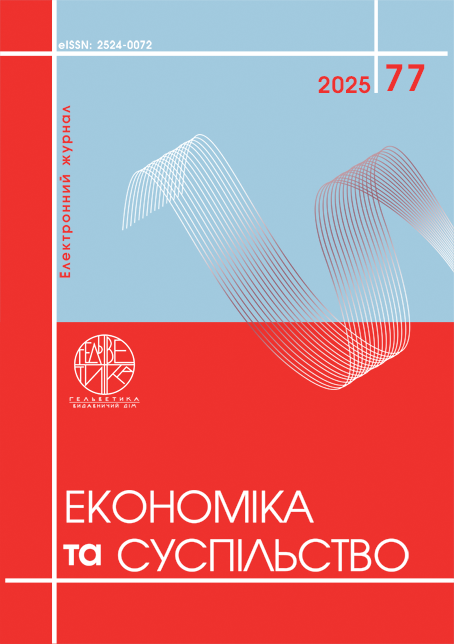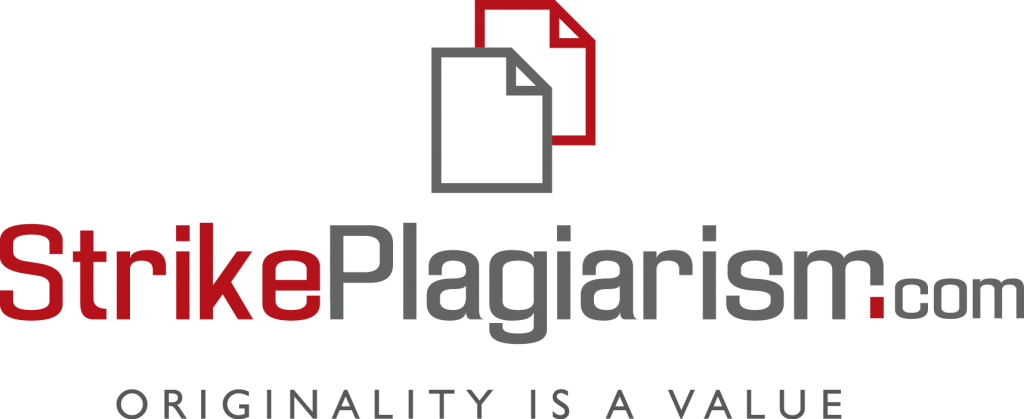CONCEPTUAL FOUNDATIONS FOR MANAGING THE LABOR POTENTIAL OF AN ENTERPRISE UNDER CONDITIONS OF UNCERTAINTY
Abstract
In the context of global economic turbulence, rapid digital transformation, and increasing labor market volatility, the issue of effective labor potential management has become critically important for ensuring enterprise resilience and sustainable growth. The purpose of this study is to substantiate the conceptual foundations for managing the labor potential of an enterprise under conditions of uncertainty. The research methodology combines systematization and generalization of scientific approaches, comparative analysis, structural-functional analysis, and elements of modeling to develop an integrated conceptual framework for new concept. The subject of the research is the theoretical and methodological approaches as well as the existing organizational mechanisms for the formation, development, and effective utilization of labor potential. The paper systematizes existing conceptual approaches and develops, on their basis, a hybrid-adaptive concept of labor potential management that integrates resource-based, competence-based, human-centered, and digital management principles. The proposed concept emphasizes the synergy between strategic human resource development and the adaptation of business processes to rapidly changing external and internal conditions. The research results demonstrate that the integration of flexible management models and digital tools enhances the adaptability, resilience, and competitiveness of the enterprise. It also highlights that the effective management of labor potential requires a comprehensive approach that balances strategic objectives with the dynamic transformations of the socio-economic environment. The findings contribute to the development of modern management theory by offering a conceptual framework adaptable to various sectors and applicable in volatile, uncertain, complex, and ambiguous (VUCA) contexts, supporting decision-making in both operational and strategic dimensions.
References
Wernerfelt B. A Resource‐Based View of the Firm. Strategic Management Journal, 1984. 5(2), Р. 171-180.
Barney J. Firm Resources and Sustained Competitive Advantage. Journal of Management, 1991, 17(1), Р. 99–120.
Wright P., Dunford B., Snell S. Human Resources and the Resource-Based View of the Firm. Journal of Management, 2001, 27(6), Р. 701–721.
Grant R. M.. Toward a knowledge-based theory of the firm. Strategic Management Journal, 1996. 17, Winter Special Issue, Р. 109–122.
Armstrong M. Armstrong’s Handbook of Strategic Human Resource Management. London, New York, New Dalhi: CPI Group (UK) Ltd, 2020, 801 р. URL: https://ebook.app.hcu.edu.gh/wp-content/uploads/2023/08/Michael-Armstrong-Stephen-Taylor-Armstrongs-Handbook-of-Human-Resource-Management-Practice-Kogan-Page-2020.pdf
Boyatzis, R.E. (1982). The Competent Manager. A Model for Effective Performance. New York: John Wiley & Sons, 300 p.
Spencer L., Spencer S. Competence at Work: Models for Superior Performance. New York: John Wiley and Sons LTD, 1993, 384 p.
Maslow A. H. A Theory of Human Motivation. Psychological Review, 50(4) Psychological Review, 1943. 50, P. 370-396.
McGregor, D. (1960). The Human Side of Enterprise. Bombay- New Dalhi TATA McGraw-Hill Compani, 1960. 240 p.
Rogers, C. On Becoming a Person: A Therapist’s View of Psychotherapy., Boston: Houghton Mifflin, 1961, 420 р.
Barrett, R. The Values-Driven Organization: Unleashing Human Potential for Performance and Profit. Routledge, 2010. 96 р.
2023 Global Human Capital Trends. Deloitte. 2023. URL: https://www.deloitte.com/us/en/insights/topics/talent/human-capital-trends/2023.html
Miles, R.E., Snow, C.C. Organizations: New Concepts for New Forms. California Management Review. 1986. Volume 28, Issue 3. Р. 62–73. DOI: https://doi.org/10.2307/41165
World Economic Forum, 2023. Future of Jobs Report. URL: https://www3.weforum.org/docs/WEF_Future_of_Jobs_2023.pdf
Teece, D.J., Pisano, G., Shuen, A. (1997). Dynamic Capabilities and Strategic Management. Strategic Management Journal, 18(7), 509–533. https://sms.onlinelibrary.wiley.com/doi/abs/10.1002/%28SICI%291097-0266%28199708%2918%3A7%3C509%3A%3AAID-SMJ882%3E3.0.CO%3B2-Z
North D.C. Institutions, Institutional Change and Economic Performance. Cambridge University Press. 1990. p. 33. DOI: https://doi.org/10.1017/CBO9780511808678
Soskice, D. & Hall, P.A. Varieties of Capitalism: The Institutional Foundations of Comparative Advantage. Academy of Management Review. 2001. 28(3) January. DOI: https://doi.org/10.2307/30040740
Work for a brighter future – Global Commission on the Future of Work. International Labour Organization, Geneva: ILO, 2019. URL: https://www.ioe-emp.org/index.php?eID=dumpFile&t=f&f=135117&token=775ce5c1b6c0f880bee999d32b07312264a46ab7
Adizes, I.. Managing Corporate Lifecycles. Published by Prentice Hall Pr. 1999, 468 р.
Hurst, D. K. Crisis & Renewal: Meeting the Challenge of Organizational Change. Harvard Business School Press. 1995, 229 р.
Argyris, C., Schön, D.A. Organizational Learning: A Theory of Action Perspective. Reading, Mass. : Addison-Wesley Pub. Co. 1978, 300 р.
Herzberg, F. Work and the Nature of Man. Cleveland, OH: World Pub. Co. 1966, 203 р.
Ryan, R. M., & Deci, E. L. (2000). Self-determination theory and the facilitation of intrinsic motivation, social development, and well-being. American Psychologist, 55(1), 68–78. DOI: https://doi.org/10.1037/0003-066X.55.1.68
Schein, E. H. Organizational Culture and Leadership (4th ed.). San Francisco, CA: Jossey-Bass, 2010. 467 р.
State of the Global Workplace. Understanding Employees, Informing Leaders. Washington: Gallup, 2023. 98 p.
Report of the Director‑General: Decent Work. ILO. International Labour Conference, 87th Session, Geneva, 1–17 June 1999, 88 p.
Decent Work Indicators: Guidelines for Producers and Users of Statistical and Legal Framework Indicators. ILO, 2013. 257 p.
Working Conditions and Sustainable Work: An Analysis Using the Job Quality Framework. Eurofound. Publications Office of the European Union. 2021. DOI: https://doi.org/10.2806/938302
Ulrich, D., & Dulebohn, J.H. (2015). Are we there yet? What’s next for HR? Human Resource Management Review, 25(2), 188–204. DOI: https://doi.org/10.1016/j.hrmr.2015.01.004
Human Capital Trends 2024 I Raport Deloitte. 2024. URL: https://www.deloitte.com/pl/pl/services/consulting/research/human-capital-trends-2024.html
Ulrich, D., Younger, J., Brockbank, W., & Ulrich, M. HR from the Outside In: Six Competencies for the Future of Human Resources New York: McGraw-Hill Education. 2012. 288 р.
Creating People Advantage: How People Can Drive Transformation. Boston Consulting Group (BCG) & World Federation of People Management Associations (WFPMA). 2021. 100 р. URL: https://www.bcg.com/publications/2021/creating-people-advantage-report
Wernerfelt, B. (1984). A resource‐based view of the firm. Strategic Management Journal, 5(2), 171–180.
Barney, J. (1991). Firm resources and sustained competitive advantage. Journal of Management, 17(1), 99–120.
Wright, P., Dunford, B., & Snell, S. (2001). Human resources and the resource-based view of the firm. Journal of Management, 27(6), 701–721.
Grant, R. M. (1996). Toward a knowledge-based theory of the firm. Strategic Management Journal, 17(Winter Special Issue), 109–122.
Armstrong, M. (2020). Armstrong’s handbook of strategic human resource management. CPI Group (UK) Ltd. URL: https://ebook.app.hcu.edu.gh/wp-content/uploads/2023/08/Michael-Armstrong-Stephen-Taylor-Armstrongs-Handbook-of-Human-Resource-Management-Practice-Kogan-Page-2020.pdf
Boyatzis, R. E. (1982). The competent manager: A model for effective performance. John Wiley & Sons.
Spencer, L., & Spencer, S. (1993). Competence at work: Models for superior performance. John Wiley & Sons. 384 p.
Maslow, A. H. (1943). A theory of human motivation. Psychological Review, 50(4), 370–396.
McGregor, D. (1960). The human side of enterprise. Tata McGraw-Hill Company. 240 p.
Rogers, C. (1961). On becoming a person: A therapist’s view of psychotherapy. Houghton Mifflin. 420 р.
Barrett, R. (2010). The values-driven organization: Unleashing human potential for performance and profit. Routledge. 96 р.
Deloitte. (2023). 2023 global human capital trends. URL: https://www.deloitte.com/us/en/insights/topics/talent/human-capital-trends/2023.html
Miles, R. E., & Snow, C. C. (1986). Organizations: New concepts for new forms. California Management Review, 28(3), 62–73. DOI: https://doi.org/10.2307/4116522
World Economic Forum. (2023). Future of jobs report. URL: https://www3.weforum.org/docs/WEF_Future_of_Jobs_2023.pdf
Teece, D. J., Pisano, G., & Shuen, A. (1997). Dynamic capabilities and strategic management. Strategic Management Journal, 18(7), 509–533. DOI: https://doi.org/10.1002/(SICI)1097-0266(199708)18:7<509::AID-SMJ882>3.0.CO;2-Z
North, D. C. (1990). Institutions, institutional change and economic performance. Cambridge University Press. p. 33. DOI: https://doi.org/10.1017/CBO9780511808678
Soskice, D., & Hall, P. A. (2001). Varieties of capitalism: The institutional foundations of comparative advantage. Academy of Management Review, 28(3). DOI: https://doi.org/10.2307/30040740
International Labour Organization. (2019). Work for a brighter future – Global Commission on the Future of Work. URL: https://www.ioe-emp.org/index.php?eID=dumpFile&t=f&f=135117&token=775ce5c1b6c0f880bee999d32b07312264a46ab7
Adizes, I. (1999). Managing corporate lifecycles. Prentice Hall Press. 468 р.
Hurst, D. K. (1995). Crisis & renewal: Meeting the challenge of organizational change. Harvard Business School Press. 229 р.
Argyris, C., & Schön, D. A. (1978). Organizational learning: A theory of action perspective. Addison-Wesley Publishing Company. 300 р.
Herzberg, F. (1966). Work and the nature of man. World Publishing Company. 203 р.
Ryan, R. M., & Deci, E. L. (2000). Self-determination theory and the facilitation of intrinsic motivation, social development, and well-being. American Psychologist, 55(1), 68–78. DOI: https://doi.org/10.1037/0003-066X.55.1.68
Schein, E. H. (2010). Organizational culture and leadership (4th ed.). Jossey-Bass. 467 р.
Gallup. (2023). State of the global workplace: Understanding employees, informing leaders. Gallup Press. 98 р.
International Labour Organization. (1999). Report of the Director-General: Decent work. International Labour Conference, 87th Session, Geneva. 88 р.
International Labour Organization. (2013). Decent work indicators: Guidelines for producers and users of statistical and legal framework indicators. 257 р.
Eurofound. (2021). Working conditions and sustainable work: An analysis using the job quality framework. Publications Office of the European Union. DOI: https://doi.org/10.2806/938302
Ulrich, D., & Dulebohn, J. H. (2015). Are we there yet? What’s next for HR? Human Resource Management Review, 25(2), 188–204. DOI: https://doi.org/10.1016/j.hrmr.2015.01.004
Deloitte. (2024). Human capital trends 2024. Raport Deloitte. URL: https://www.deloitte.com/pl/pl/services/consulting/research/human-capital-trends-2024.html
Ulrich, D., Younger, J., Brockbank, W., & Ulrich, M. (2012). HR from the outside in: Six competencies for the future of human resources. McGraw-Hill Education. 288 р.
Boston Consulting Group, & World Federation of People Management Associations. (2021). Creating people advantage: How people can drive transformation. URL: https://www.bcg.com/publications/2021/creating-people-advantage-report
Copyright (c) 2025 Олександр Зеленко, Артем Смаглій

This work is licensed under a Creative Commons Attribution 4.0 International License.


